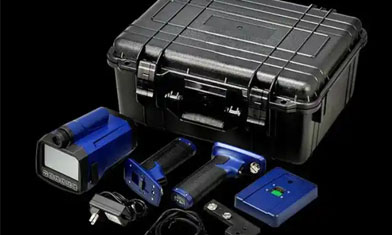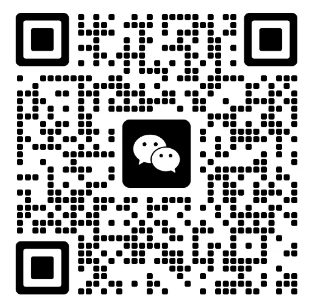The core principle of the speedometer
Speedometers, as devices that accurately measure the speed of moving objects, rely on various sensing technologies such as radar, laser, and acoustic waves. Their real-time performance, high accuracy, and strong environmental adaptability have made them widely used in a variety of fields, including traffic management, industrial production, scientific research, and sports. The requirements for measurement range, accuracy, and response speed vary significantly across these fields. Specific application scenarios are as follows:
1. Traffic Management: A Core Tool for Road Safety and Law Enforcement
In traffic scenarios, speedometers are critical for controlling vehicle speeds, curbing speeding violations, and ensuring road safety. Key applications include:
Fixed road speed measurement: Commonly found on highways, urban expressways, and accident-prone areas, they typically utilize radar or laser speedometers. Radar speed guns (mostly K-band and Ka-band) provide long-range (100-800 meters) non-contact speed measurement, are unaffected by weather (operating reliably in rain and fog), and can simultaneously monitor vehicle speeds in multiple lanes. Laser speed guns offer higher accuracy (error ≤ ±1 km/h), but can only lock onto a single target at a time, making them suitable for precise enforcement on key roads. These devices are often linked to electronic monitoring systems to automatically capture the license plate, time, and location of speeding vehicles, generating evidence for enforcement.
Mobile speed enforcement: Traffic police often use portable radar speed guns or handheld laser speed guns on temporarily controlled roads (such as those near schools and construction zones). Portable devices can be mounted on a tripod, weighing only 1-3 kg, making them easy to carry and capable of measuring speeds within a range of 50-500 meters. Handheld devices offer greater flexibility and an effective range of 30-300 meters, making them suitable for quickly identifying speeding vehicles in complex road conditions (such as curves and slopes). They also feature data storage (capable of storing thousands of speed records) for easy export and verification.
Interval speed measurement: On long highway sections (typically 5-20 kilometers), microwave radar speed guns or video analysis speed guns are installed at the start and end points. The speed is then combined with the vehicle's travel time to calculate the average speed within the interval, effectively preventing violations such as "fixed-point speed reduction and excessive speed within the interval." Some advanced systems also use license plate recognition technology to match vehicle information at the start and end points in real time, automatically calculating the average speed and determining whether the vehicle is speeding. Non-motorized Vehicle and Pedestrian Speed Measurement: To control the speed of non-motorized vehicles like electric bicycles and scooters, some locations have installed infrared or video speed cameras in urban pedestrian streets and scenic areas. These cameras have a measurement range of 0-30 km/h. When the speed limit is exceeded, an audible and visual warning is issued to remind the user to slow down. Violation data is also recorded to assist management in providing guidance.
II. Industrial Production: A Key Guarantee for Process Control and Equipment Maintenance
In industrial scenarios, speed meters are primarily used to monitor the operating speed of production equipment and material transfer speeds to ensure stable and safe production processes. Specific applications include:
Mechanical Equipment Speed Monitoring: Contact speed meters (such as tachometers and friction wheel speed meters) or non-contact speed meters (such as photoelectric speed meters and Hall effect speed meters) are commonly used on equipment such as motors, gearboxes, fans, and pumps. Contact-type devices measure rotational speed through direct contact with the rotating shaft, offering high accuracy (≤±0.5%), but are not suitable for high-speed or easily worn shafts. Non-contact devices measure rotational speed by detecting reflective markings or magnetic signals on the shaft. They have a wide measurement range (0-100,000 rpm) and do not affect normal equipment operation. They can monitor speed anomalies (such as overload or stalling) in real time, providing timely warnings of failures.
Material transmission speed monitoring: In assembly line production (such as automotive manufacturing and electronics assembly) and logistics warehousing (such as conveyor belts and sorting machines), laser Doppler velocimeters or ultrasonic velocimeters are used to monitor the transmission speed of materials and workpieces. Laser velocimeters can accurately measure surface velocity (with an error of ≤±0.1%) and are suitable for materials such as metal, plastic, and paper. Ultrasonic velocimeters are unaffected by material color or transparency, making them suitable for use in dusty, humid environments (such as mines and cement plants). They have a measurement range of 0.1-10 m/s. When the transmission speed deviates from the set value, an alarm is automatically triggered, adjusting the assembly line speed to prevent quality issues caused by material accumulation or excessive transmission speed.
Fluid Velocity Measurement: In the petroleum, chemical, and water treatment industries, turbine flowmeters and electromagnetic flowmeters are used to measure the flow velocity of liquids and gases in pipelines. Turbine flowmeters use the turbine's rotational speed to measure fluid velocity, offering high accuracy (with an error of ≤±0.2%) and are suitable for clean fluids. Electromagnetic flowmeters use the principle of electromagnetic induction to measure the velocity of conductive fluids. They are unaffected by fluid density and viscosity and can measure impure fluids such as sewage and slurries. With a measurement range of 0.05-10 m/s, they help companies monitor fluid transmission efficiency and prevent pipeline blockages and leaks. Elevator and Hoisting Equipment Speed Measurement: Speed limiters (such as centrifugal speed meters and photoelectric speed meters) are installed on special equipment such as elevators, cranes, and tower cranes to monitor the equipment's lifting and lowering speeds and operating speeds in real time. When the speed exceeds a safety threshold (e.g., an elevator overspeeding by 15%), the speed meter triggers safety devices (such as brakes or speed limiter linkages), forcing the equipment to stop, ensuring the safety of personnel and cargo.
III. Scientific Research Experiments: A Key Tool for Data Collection and Phenomenon Analysis
In scientific research, speed meters are used to measure the speed of experimental objects, providing accurate data support for research in physics, chemistry, biology, and other fields. Specific applications include:
Speed Measurement in Physics Experiments: High-speed camera speed meters or photoelectric gate speed meters are often used in mechanical experiments (such as free fall, horizontal projection, and collision experiments). High-speed cameras can capture thousands to millions of frames per second. By analyzing the displacement of objects in adjacent frames, they can calculate instantaneous velocity with an accuracy of up to 0.001 m/s, making them suitable for studying high-speed motion phenomena (such as bullet flight and explosion shock waves). Photoelectric gate velocimeters calculate the speed of an object by measuring the duration of light obstruction. They are simple to operate and have low error, making them commonly used in middle school physics experiments (for example, measuring the speed of a car on an inclined plane).
Fluid mechanics research: To study the motion of fluids such as water flow, air flow, and blood flow, researchers use particle image velocimetry (PIV) or laser velocimetry (LDA). PIV injects tiny particles into the fluid, captures their trajectory, and uses image processing techniques to calculate the velocity distribution at each point in the fluid. This allows for intuitive visualization of complex flow states such as eddies and turbulence. LDA uses the laser Doppler effect to measure particle velocity in a fluid with extremely high accuracy (error ≤ ±0.01 m/s) without disturbing the fluid flow, making it suitable for studying microscopic fluid motion (such as blood flow in capillaries). Materials Science Testing: In mechanical testing such as tensile, impact, and wear testing, extensometer velocimeters or high-speed displacement velocimeters can measure the velocity of a material during deformation. Extensometers monitor the displacement change across a gauge length and calculate the deformation velocity (0-10 m/s), enabling the study of a material's mechanical behavior under varying loading speeds. High-speed displacement velocimeters measure the displacement velocity at the moment of fracture or impact, providing data support for analyzing the material's toughness and strength.
IV. Sports: Training Analysis and Officiating Tools
In sports, velocimeters are used to measure athlete speed and equipment flight speed, helping coaches develop training plans and referees determine match outcomes. Specific applications include:
Speed measurement in ball sports: In competitions such as football, tennis, badminton, and table tennis, radar velocimeters or high-speed camera velocimeters are often used to measure ball flight speed. In football matches, speeds of shots and passes can be measured (range: 0-150 km/h). For example, shot speeds exceeding 130 km/h have been recorded in World Cup matches. In tennis matches, speedometers are installed on both sides of the court, displaying serve speeds in real time (range: 0-250 km/h) with an accuracy of ±1 km/h, providing intuitive data for spectators and referees. Due to the high speed and small size of badminton and table tennis balls, high-speed cameras (over 1000 frames per second) are often used to track the ball's trajectory and calculate speed, thus avoiding measurement errors caused by the radar signal being affected by the ball's size.
Speed measurement in track and field: During training for events like sprinting, hurdling, and race walking, coaches use infrared speedometers or video analysis speedometers to monitor athletes' running speeds. Infrared speedometers can be set up at multiple monitoring points to measure athletes' speeds at different stages (such as starting, acceleration, and sprinting), analyzing their speed changes. Video analysis systems record athletes' running movements and, based on a timeline, calculate the relationship between stride frequency, stride length, and speed, helping coaches optimize their technique and improve their performance. In addition, some marathon races will set up speed checkpoints at key locations, displaying athletes' speeds in real time for reference by spectators and event organizers.
Racing and extreme sports speed measurement: GPS speedometers or inertial navigation speedometers are widely used in extreme sports such as racing (F1, rally), motorcycle racing, skiing, and skateboarding. GPS speedometers calculate speed by receiving satellite signals, with a measurement range of 0-500 km/h and an accuracy of ±0.1 km/h. These speedometers can be displayed in real time on the racer's dashboard or on the athlete's device, helping them adjust their driving strategy. Inertial navigation speedometers are unaffected by satellite signal obstruction (such as in tunnels and mountainous areas). They calculate speed using built-in accelerometers and gyroscopes, making them suitable for use in complex environments. They also feature data logging, storing full-race speed data for post-race analysis.
V. Other Special Fields: Niche but Important Application Scenarios
In addition to the mainstream fields mentioned above, velocimeters also play a key role in some specialized scenarios:
Aerospace: During aircraft takeoff and landing, rocket launches, and satellite in-orbit operations, radar velocimeters, laser velocimeters, or Doppler velocimeters are used to measure aircraft speed. During takeoff and landing, ground-based radar velocimeters monitor the aircraft's touchdown velocity (ranging from 0 to 300 km/h) in real time to ensure safe takeoff and landing. During rocket launch, tracking radar measures the rocket's ascent velocity (up to several thousand meters per second), providing critical data to flight control. During in-orbit satellites, Doppler velocimeters receive radio signals from the satellite to calculate its orbital velocity and assist in adjusting orbital parameters.
Meteorological Observation: At weather stations and typhoon monitoring stations, wind speed meters (such as cup anemometers and ultrasonic anemometers) are used to measure atmospheric flow velocity. Cup anemometers calculate wind speed based on the cup's rotational speed, with a measurement range of 0-60 m/s and a simple, durable structure. Ultrasonic anemometers utilize the relationship between the speed of ultrasonic waves in air and wind speed to simultaneously measure wind speed and direction. They offer higher accuracy (error ≤±0.1 m/s) and are wear-resistant, making them suitable for long-term outdoor observations and providing data support for weather forecasts and typhoon warnings.
In the military: In weapons testing and battlefield reconnaissance, velocimeters are used to measure the flight speed of ammunition and target movement. When firing artillery shells or bullets, ballistic velocimeters (such as sky and light screen targets) calculate velocity (range 100-1000 m/s) by measuring the time it takes for ammunition to traverse the light screen, with an accuracy of ±1 m/s. These instruments are used to evaluate weapon performance. In battlefield reconnaissance, military radar velocimeters can measure the speed of enemy vehicles, ships, and aircraft from long distances (several kilometers), providing target motion information to combat commanders and assisting in tactical decision-making.





















